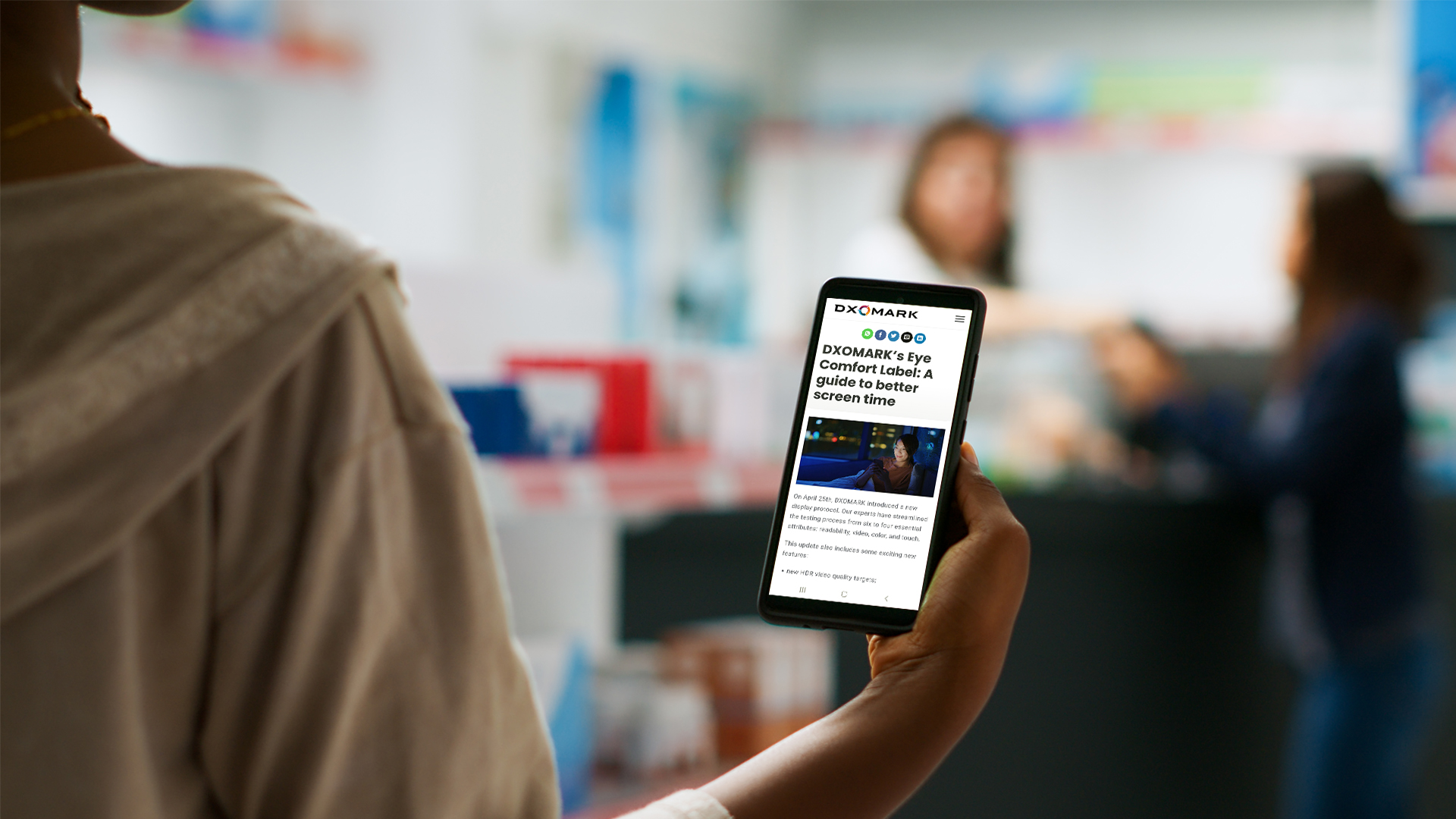
Most premium smartphones today come equipped with a feature that adjusts the display’s Correlated Color Temperature (CCT) based on ambient lighting. Since its color can vary depending on the type of light bulb (warm/neutral/cold white LED, incandescent, …) or time of the day (for natural light), this technology aims to create a more natural viewing experience by shifting the color temperatures of the screen closer to the color temperatures of the environment. CCT adaptation can help to minimize cognitive dissonance, a type of discomfort or tension that the viewer can experience when what he expects to see on the display does not match what he actually sees.
Some manufacturers even suggest that their displays are “paper like,” providing the viewer with a readability experience that resembles the naturalness of paper. That being said, this feature is rarely activated by default, with the notable exception of True Tone on iPhone.
| Devices | Apple iPhone 16 Pro Max | Honor Magic6 Pro | Samsung Galaxy S24 Ultra | Xiaomi 14 Ultra | Oppo Find X7 Ultra | Vivo X100 Pro | Google Pixel 9 Pro | Huawei Mate 60 Pro+ |
| Presence of CCT adaptation feature | Yes | Yes | Yes | Yes | Yes | Yes | No | No |
| CCT adaptation feature name | True Tone | Natural Tone | Adaptative Color Tone | Adaptative colors | Natural Tone Display | Color temperature adjustment | N/A | N/A |
| Activated by default | Yes | No | No | No | No | No | N/A | N/A |
As part of our constant exploration of features contributing to user comfort, we compared color adaptation to ambient lighting of several flagship devices: the Apple iPhone 16 Pro Max, Honor Magic6 Pro, Xiaomi 14 Ultra, Vivo X100 Pro, Oppo Find X7 Ultra, and Samsung Galaxy S24 Ultra.
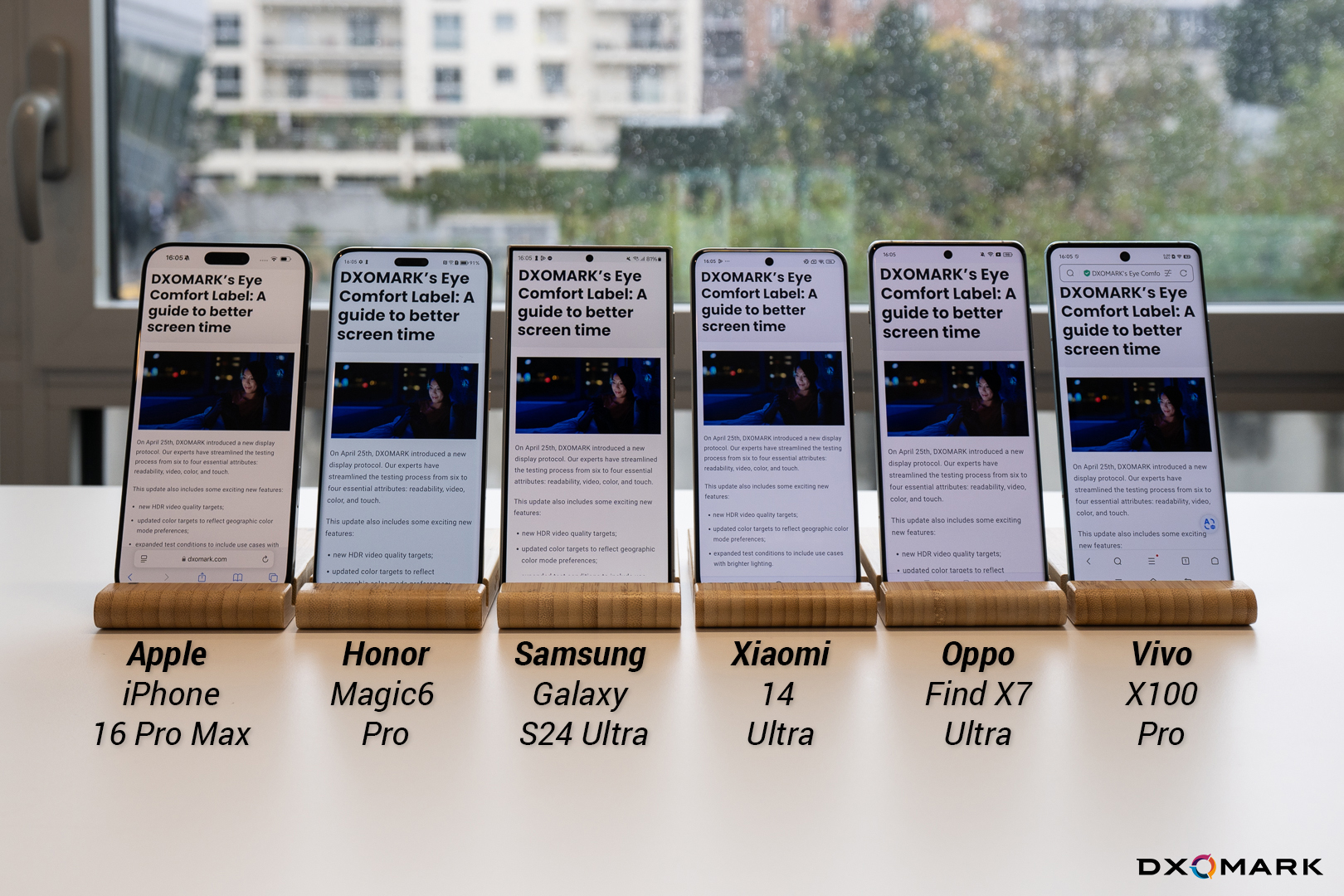
Lab Findings on Color Temperature Adaptation:
Although each manufacturer says that their colorimetry is optimized, our study showed that the experience was quite different with each device when it came to adapting to ambient lighting.
To gain deeper insights, we conducted a series of laboratory tests:
-
- Evaluation in a use-case office environment (mixed lighting)
- Evaluation in our perceptual booth with controlled lighting conditions, CCT ranging from 2700K (warm white) to 10000K (extreme case of bluish white, not reflecting natural lighting)
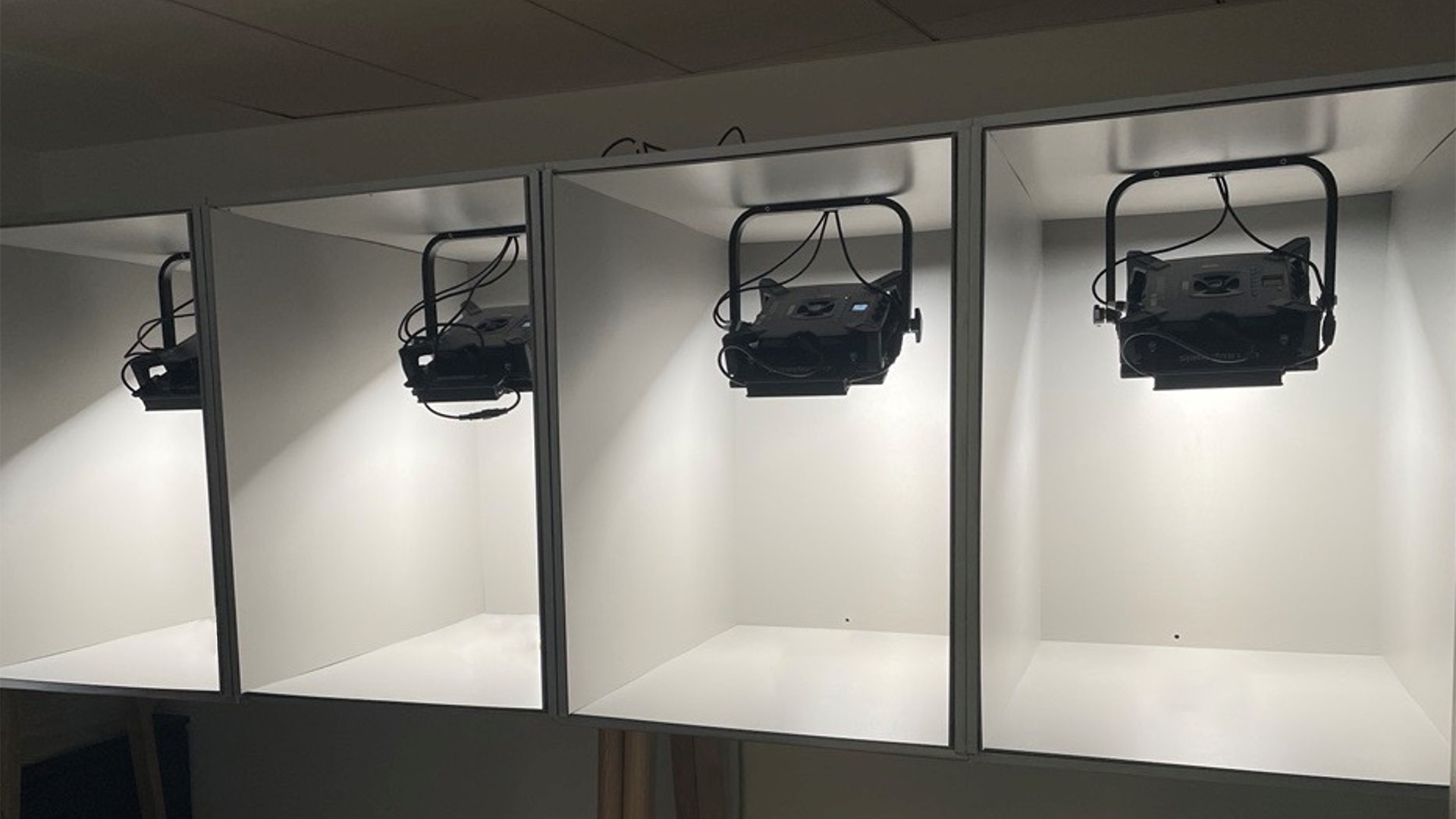
Here are the key observations:
-
- No Consensus Among Devices on CCT:
A notable observation was that the smartphones all had different CCT values, regardless of the lighting conditions. Each device had its own response to ambient light, resulting in varying color tones from one to the other, which could impact the user experience, for example, when switching between different devices. OEMs have undoubtedly studied user preferences regarding CCT adaptation, however their conclusions are widely different, as if preferences depend more on the brand than on the users. - CCT Never Drops Below 5000K:
None of the devices we tested provided a consistent viewing experience with ambient lighting. However, there is one point on which all OEMs agree: a CCT under 5000K is not pleasant. Even in the warmest tested environment, all of the smartphones kept to a CCT higher than 5000K. In particular, the viewing experience is very far from paper reading experience. - No adaptation from the Samsung Galaxy S24 Ultra:
One of the most striking findings was the behavior of the Samsung Galaxy S24 Ultra. Although the rendering visibly changes when activating the feature, dropping from 7000K to 6000K, the device consistently displayed the later CCT in all tested conditions, showing no signs of adapting to the ambient light. This points to a possible hardware or software issue because the device did not adjust in scenarios where other smartphones at least attempted some level of adaptation. - No Adaptation to Unnatural Lighting Conditions:
It’s no surprise that most devices will not be able to adapt to an extreme 10000K lighting condition, which is rarely encountered in nature or artificial lighting. However, we wanted to test the limits of these devices to see how far they would adjust. Most smartphone displays demonstrated a bluish-white adaptation up to around 7500K. A notable exception was the Vivo X100 Pro display, which adapted as high as 9000K, delivering a consistently smooth viewing experience. While this is a notable achievement from the Vivo device, most people will not notice it.
- No Consensus Among Devices on CCT:
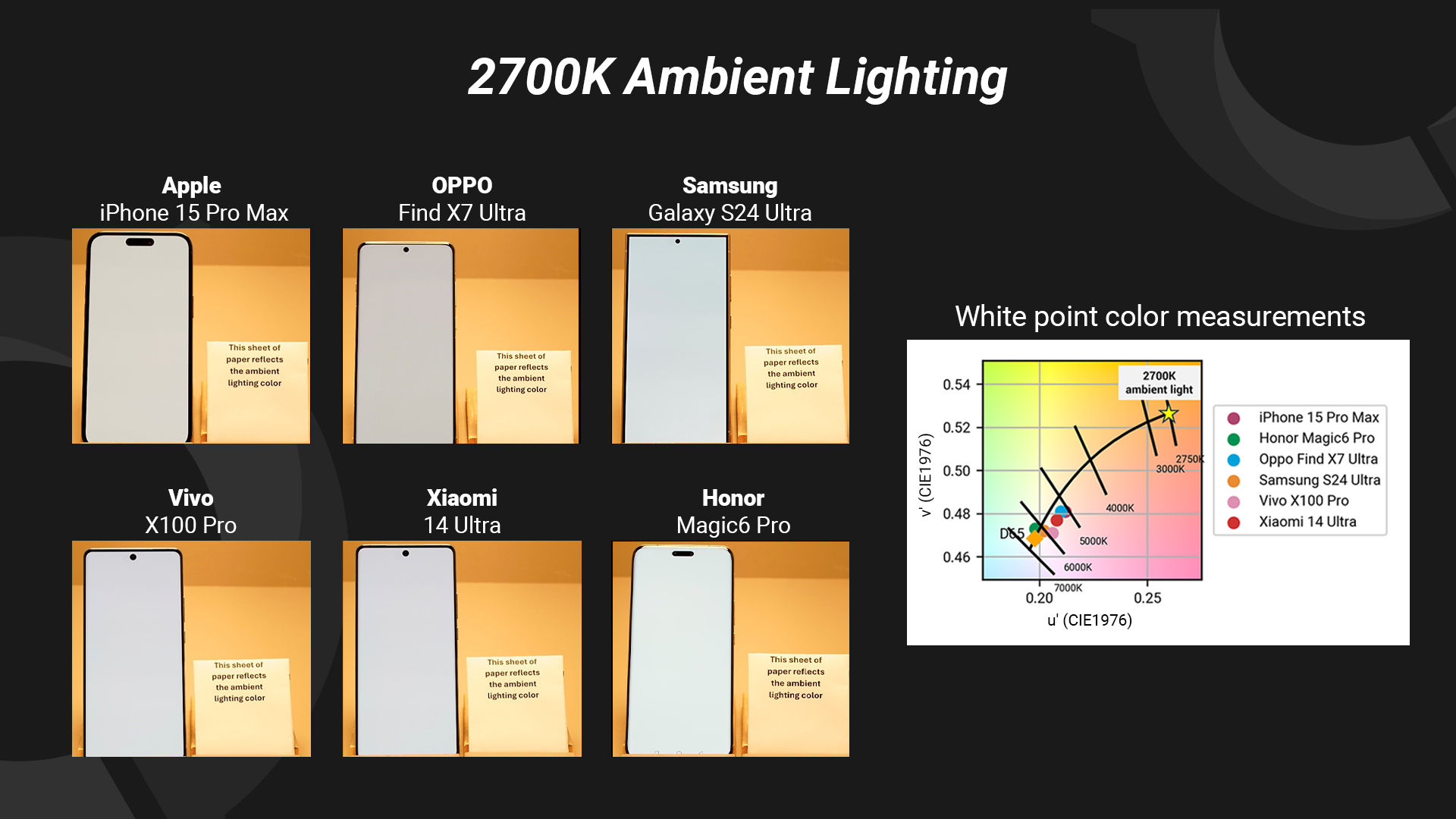
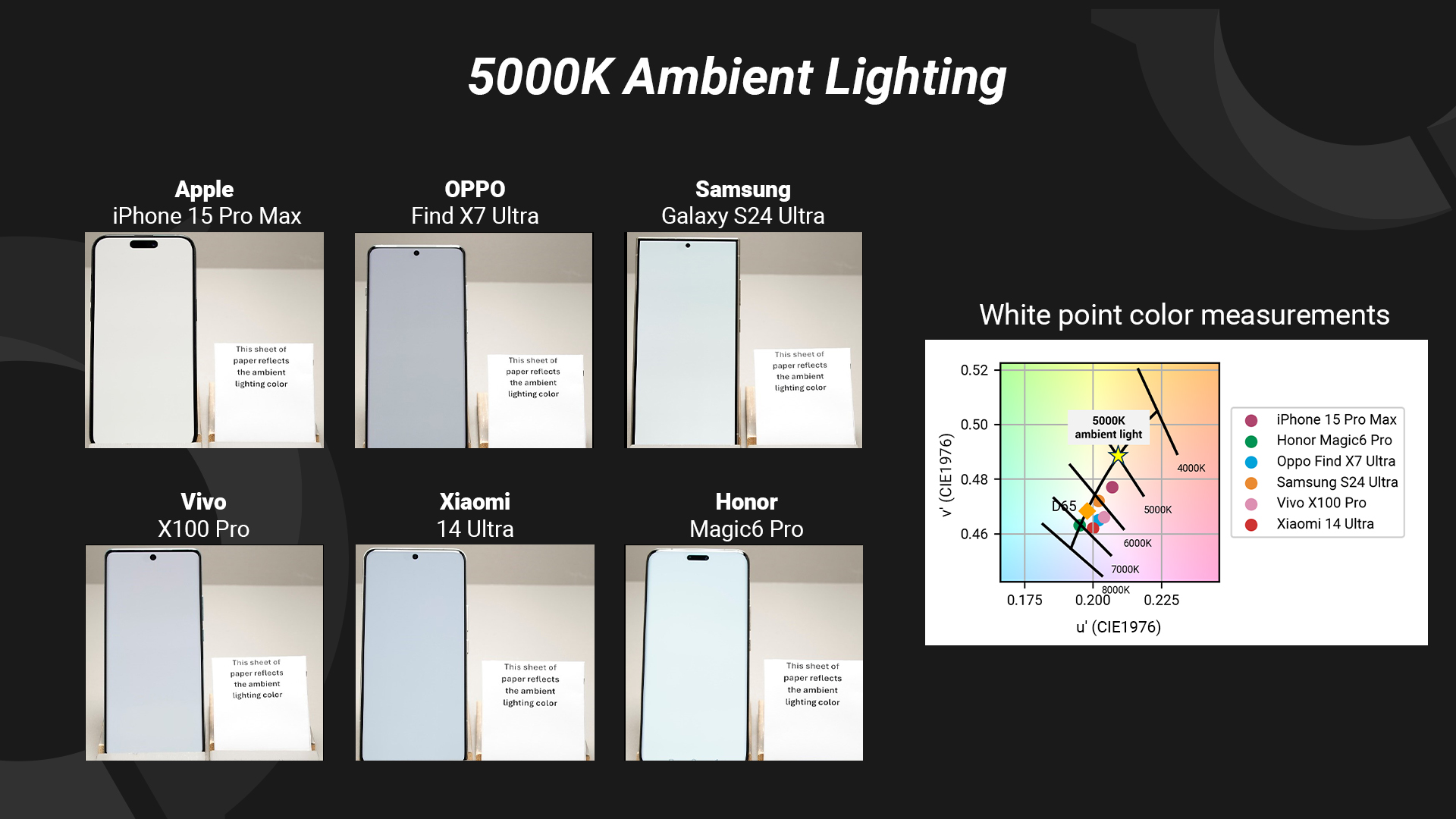
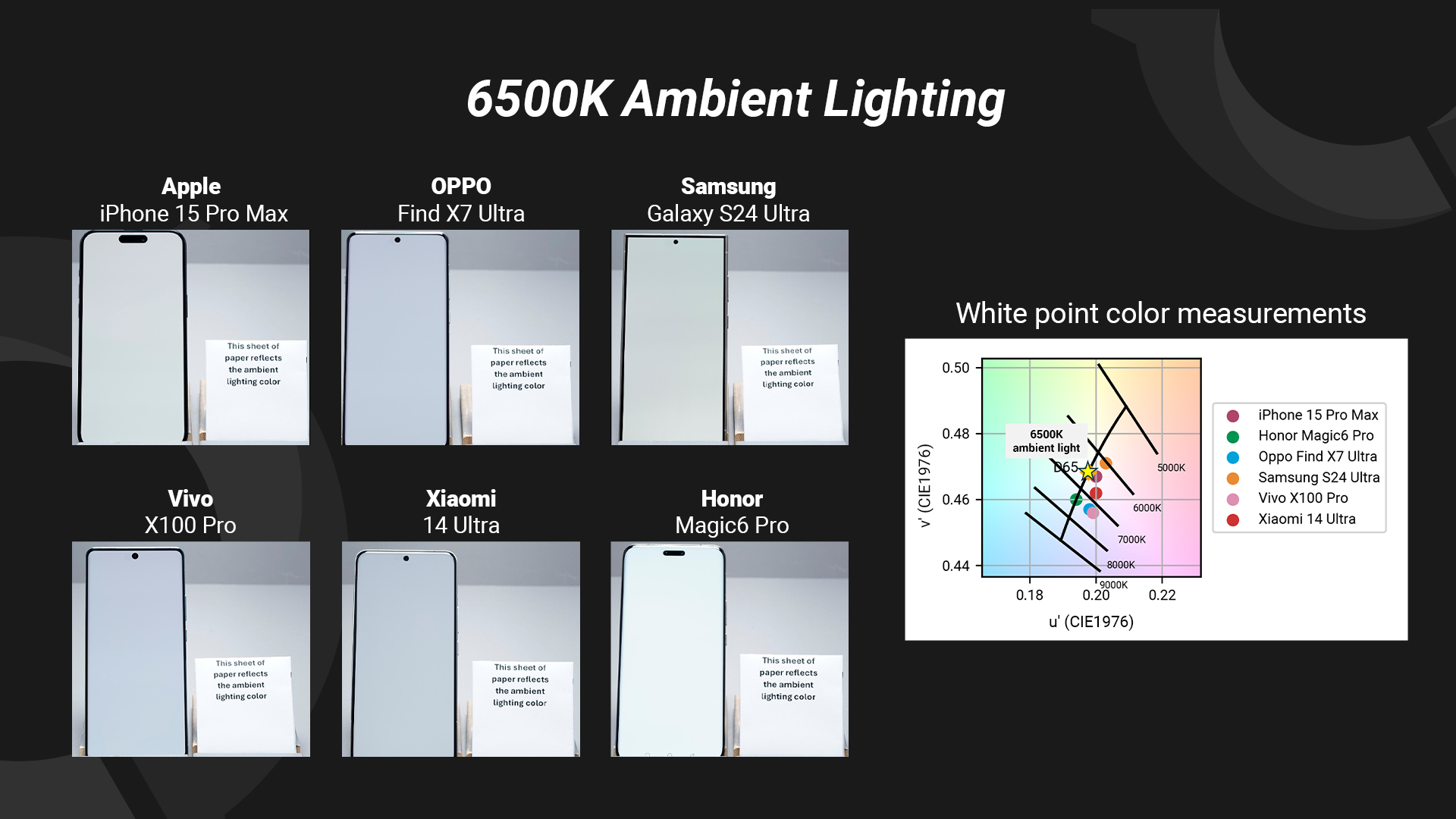
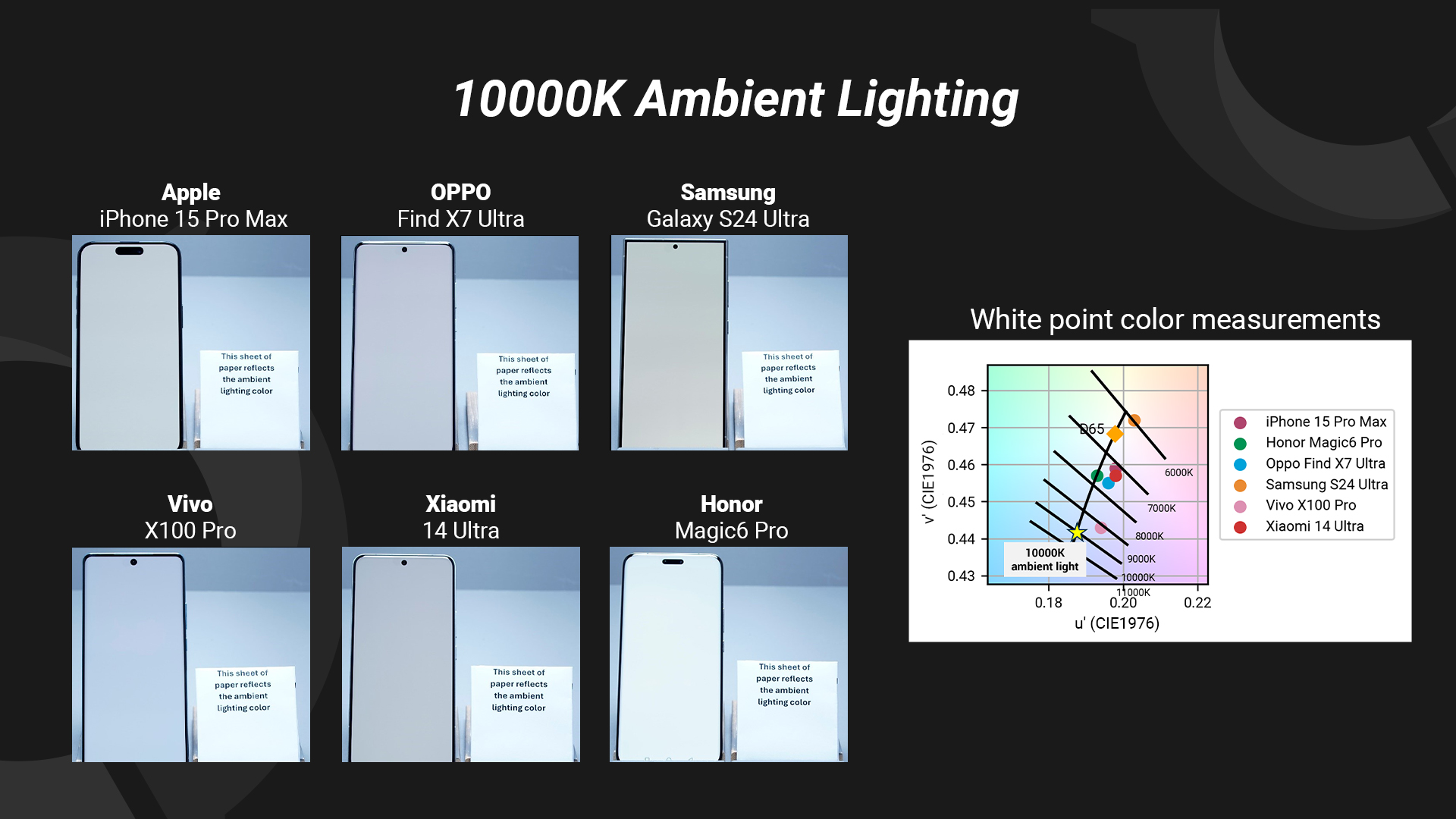
Conclusion:
While many premium smartphones advertise advanced ambient light adaptation technology, our tests suggest that there is still significant room for improvement in how devices handle color temperature adjustments. The choice to stay above 5000K, inconsistent behavior in warm lighting, and hardware or software limitations, such as the static CCT on the Samsung Galaxy S24 Ultra, highlight the need for further refinement in this area.
For users seeking the most natural and comfortable viewing experience, these differences in CCT adaptation could play a crucial role in their overall satisfaction with a device. Manufacturers will need to focus more on fine-tuning these algorithms through user preference studies which might differ regionally as TV white point settings do and to ensure that their devices can more accurately provide a comfortable experience in real time.
While all these devices promise to bring the best experience to the user, it is nonetheless surprising that there remains no technical consensus on adaptation. Who do you think provides the best CCT adaptation?

